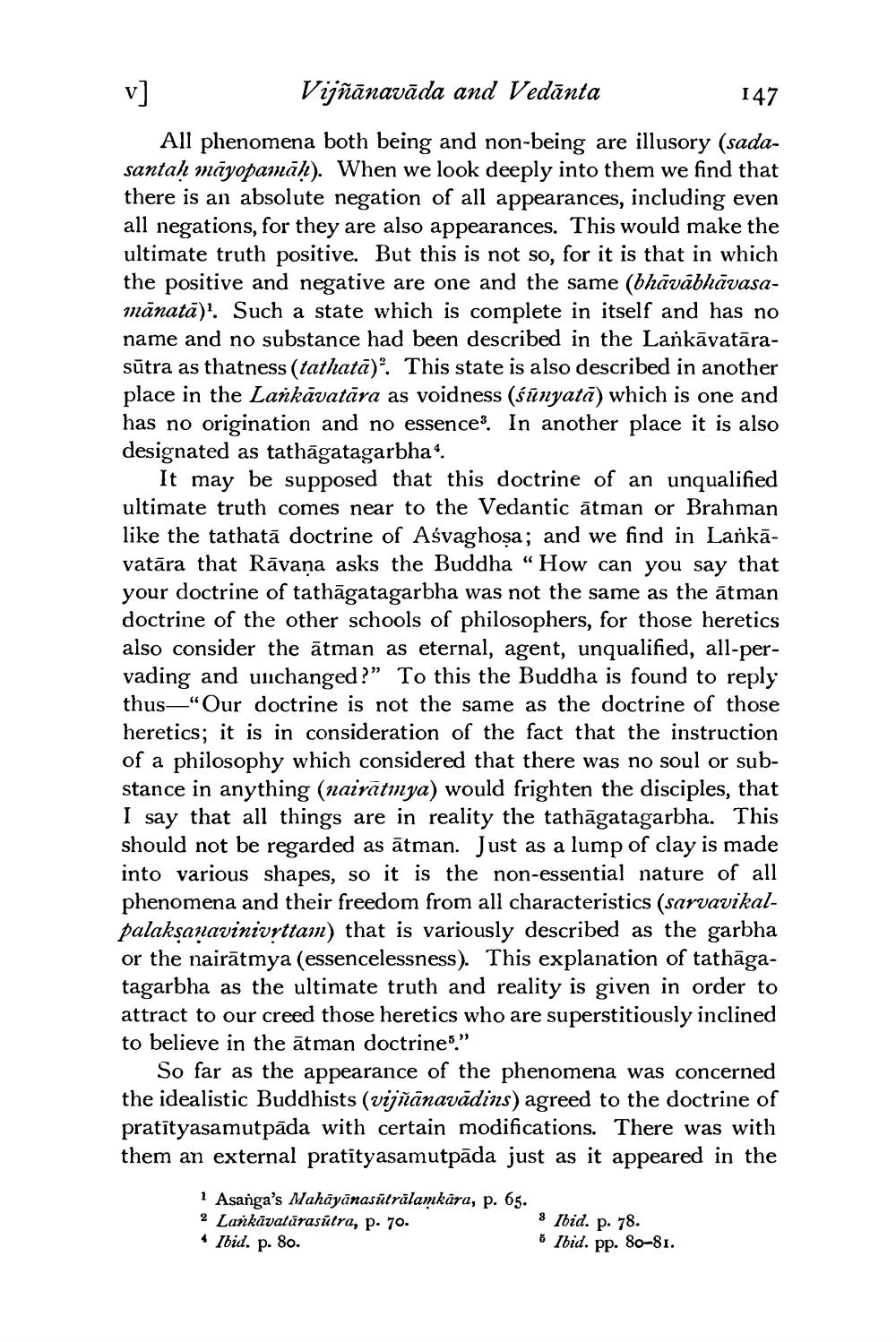________________
Vijñānavāda and Vedānta
147
All phenomena both being and non-being are illusory (sadasantah māyopamāk). When we look deeply into them we find that there is an absolute negation of all appearances, including even all negations, for they are also appearances. This would make the ultimate truth positive. But this is not so, for it is that in which the positive and negative are one and the same (bhāvābhāvasamānatā)'. Such a state which is complete in itself and has no name and no substance had been described in the Lankāvatārasūtra as thatness (tathatā). This state is also described in another place in the Lankāvatāra as voidness (śünyata) which is one and has no origination and no essence?. In another place it is also designated as tathāgatagarbha“.
It may be supposed that this doctrine of an unqualified ultimate truth comes near to the Vedantic ātman or Brahman like the tathatā doctrine of Asvaghosa; and we find in Lankāvatāra that Rāvana asks the Buddha “How can you say that your doctrine of tathāgatagarbha was not the same as the ātman doctrine of the other schools of philosophers, for those heretics also consider the ātman as eternal, agent, unqualified, all-pervading and unchanged?” To this the Buddha is found to reply thus—“Our doctrine is not the same as the doctrine of those heretics; it is in consideration of the fact that the instruction of a philosophy which considered that there was no soul or substance in anything (nairātmya) would frighten the disciples, that I say that all things are in reality the tathāgatagarbha. This should not be regarded as ātman. Just as a lump of clay is made into various shapes, so it is the non-essential nature of all phenomena and their freedom from all characteristics (sarvavikalpalaksanavinivrttam) that is variously described as the garbha or the nairātmya (essencelessness). This explanation of tathāgatagarbha as the ultimate truth and reality is given in order to attract to our creed those heretics who are superstitiously inclined to believe in the ātman doctrines.”
So far as the appearance of the phenomena was concerned the idealistic Buddhists (vijñānavādins) agreed to the doctrine of pratītyasamutpāda with certain modifications. There was with them an external pratityasamutpāda just as it appeared in the
1 Asanga's Mahāyānasūträlamkāra, p. 65. 2 Lankāvatārasútra, p. 70.
3 Ibid. p. 78. * Ibid. p. 80.
• Ibid. pp. 80-81.




